Sheep farming, often known as sheep husbandry, is the practice of keeping and producing domestic sheep. It’s a sub-discipline of animal husbandry. Sheep are raised primarily for their meat (lamb and mutton), milk (sheep’s milk), and fiber (wool). Sheep can also be grown in a wide range of temperate climates, including deserts closer to the equator as well as other hot and humid areas.
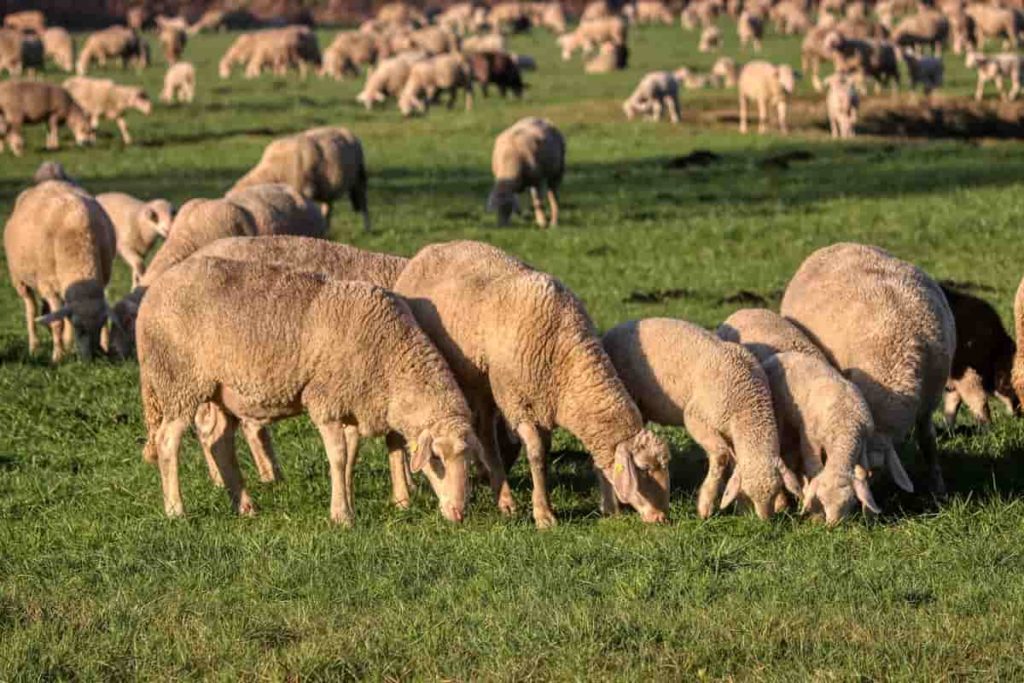
Farmers build fences, housing, shearing sheds, and other water, feed, transportation, and pest management infrastructure on their land. On most farms, sheep are permitted to graze pastures under the watch of a shepherd or sheepdog. Let’s find out how this farmer made 5 lakh profit from sheep farming
What are the advantages of sheep farming?
Sheep, on the other hand, demand less effort and do not necessitate the construction of costly structures. The foundation stock is reasonably priced, and the flock can be swiftly expanded. Sheep are excellent grass-to-meat and wool-to-meat and wool-to-meat and wool-to-meat and wool-to-meat Sheep, unlike other animals, consume a diverse range of plants. As a result, they’re great at eating weeds.
Sheep, unlike goats, do not wreak havoc on trees. Wool production, meat production, and manure production are all sources of income for the shepherd. The shape of their lips helps them clean lost grains after harvest, allowing them to repurpose waste feed into commercial goods.
How this farmer made 5 lakh profit from sheep farming
The success story of Mr. Sai Eshwar Rao
Perseverance, determination, and dedication are the keys to success in any field. A young man with a degree started breeding 50 sheep two years ago and today feeds 150 sheep, earning a net profit of 50,000 per month. Raising sheep at a labor-intensive level with the herds selling offspring every 3 months, the income has become promising despite some herd growth. Reduced risk inbreeding.
In case you miss this: How this Farmer Made 24 Lakh Profit from Country Chicken Farming – A Success Story
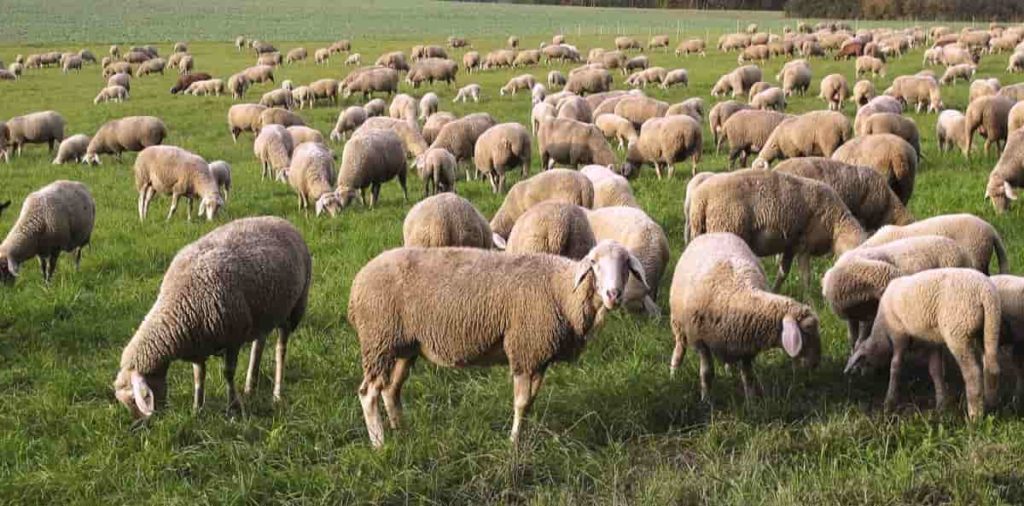
Munga Sai Eshwara Rao is a young farmer from Jagannadhapuram village in the Chintakani zone of Khammam district. Being from the Yadava family, their caste occupation in itself was sheep rearing. In the past, his father used to raise sheep extensively outside. As the shortage of fodder increased, the risk of breeding increased. Although Sai Eshwara Rao tried for a job, his monthly salary was nominal and he started sheep farming with the encouragement of his father.
The sheep are grazed in a semi-concentrated manner rather than extensively … that is, for four and a half hours a day within a 4 km radius of the village and at full-time grazing in sheds at full strength. This makes the creatures on his farm look active. Raising fodder on 2 acres, the farmer grows Super Napier, Hedge Lucerne, and Stylo Scabra fodder. A 5 hp chaff cutter is used for chopping grass.
At present, there are 150 sheep on the farm and only the kids are sold, raising their young to 3 months of age. The young farmer says that this is bringing in an income of not less than Rs 50,000 per month. In this story, we will learn about the experiences of this young farmer who is getting good results at a low cost by growing in a semi-concentrated manner.
Selection of breed
All sheep that Mr. Eshwar bought belong to the Nellore breed. In this breed, female sheep gain weight of 35 to 40 kg in 18 months, and male sheep can grow till they reach 50 to 60 kg. In this Nellore breed sheep, he specifically bought sheep of Nellore jodipi, Nellore brown, Nellore palla sub-breeds.
In case you miss this: How this Farmer Made 5 Lakh Profit From His Goat Farm – A Success Story
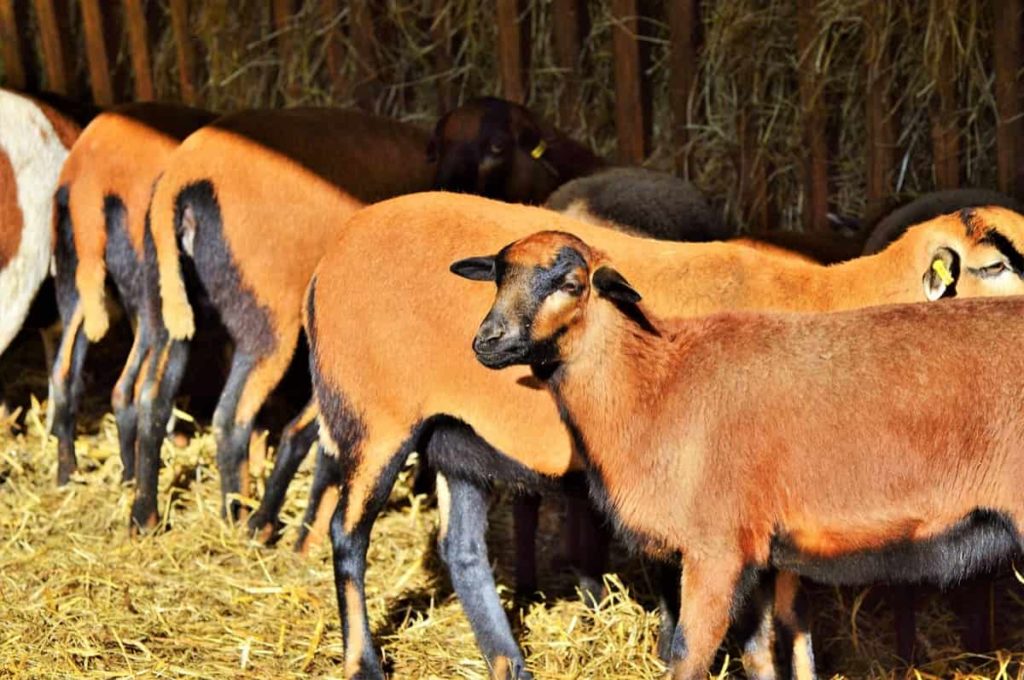
He also bought some of the Macharla breeds to test their growth and compare them with the Nellore breed. If they give better results then he can shift to the Macharla breed completely. This Macharla breed can be recognized easily since they have dark spots over their white skin.
Shed construction of Mr. Sai Eshwar’s farm
Mr. Eshwar used 15 cents of land for the rearing of his sheep. And he built a shed of length 60 feet and width 40 feet in that land. He used red soil as a layer on the ground for his sheep farm since it can absorb the liquid excreta of his sheep and other organic waste. This soil can also help in easy cleaning of the shed. Mr. Eswar also installed fans for his sheep, this can help them escape the hot temperatures in summer. Mosquito nets are also installed in this shed.
Shed capacity of his farm is 100 sheep and the remaining sheep can use the free space outside the shed. He built this shed with minimal cost since he used low-cost materials for constructing the shed. The 15 cents land is protected by fencing so that sheep cant jump or escape outside. This fence also keeps the sheep away from rodents.
Feed requirements of Mr. Eshwar’s sheep
Mr. Eshwar has been growing natural feed on 2 acres of his land to feed his sheep. These 2 acres of land is just beside his sheep farm which helps in erasing transportation costs. Proper usage of these natural feed sources is helping them to provide feed for his sheep at the proper time, which results in better growth of his sheep. At the start of sheep farming, Mr. Eshwar used to cultivate natural feed over 1 acre, which can be fed only to 30 to 35 sheep.
But now, he overcame this trouble as he uses Super Napier cattle feed now, which increased the feed in the same 1 acre but can be fed to nearly 70 to 80 sheep. The grass of Super Napier can grow till 18 feet and has the potential to yield 250 tons per acre in one year. Super Napier cattle feed contains 16 to 18 percent protein content, which is quite helpful for the proper growth of sheep. This grass can be harvested every 40 days and can be fed to sheep daily.
He also started cultivating Hedge Lucerne cattle feed in half an acre. Hedge Lucerne cattle feed is loved by the cattle and they eat this feed with great interest. This grass can yield continuously for 5 to 6 years, which is very beneficial. This grass contains 18 to 20 percent of protein content, says Mr. Eshwar. Like Super Napier, this grass can also be harvested every 40 days.
He is also cultivating Stylo Scabra fodder in another half acre. He gives a mixture of these three grass types to his sheep daily as feed. He makes a mixture with proper proportions of Super Napier, Hedge Lucerne, and Stylo Scabra and feeds it to his sheep daily for them to develop healthily. Mr. Eshwar spends nearly 1,00,000 rupees on his sheep farm every year, and most of this includes feed and watering costs.
In case you miss this: How this Farmer Made 10 Lakh from His Murrel Fish Farm – A Success Story
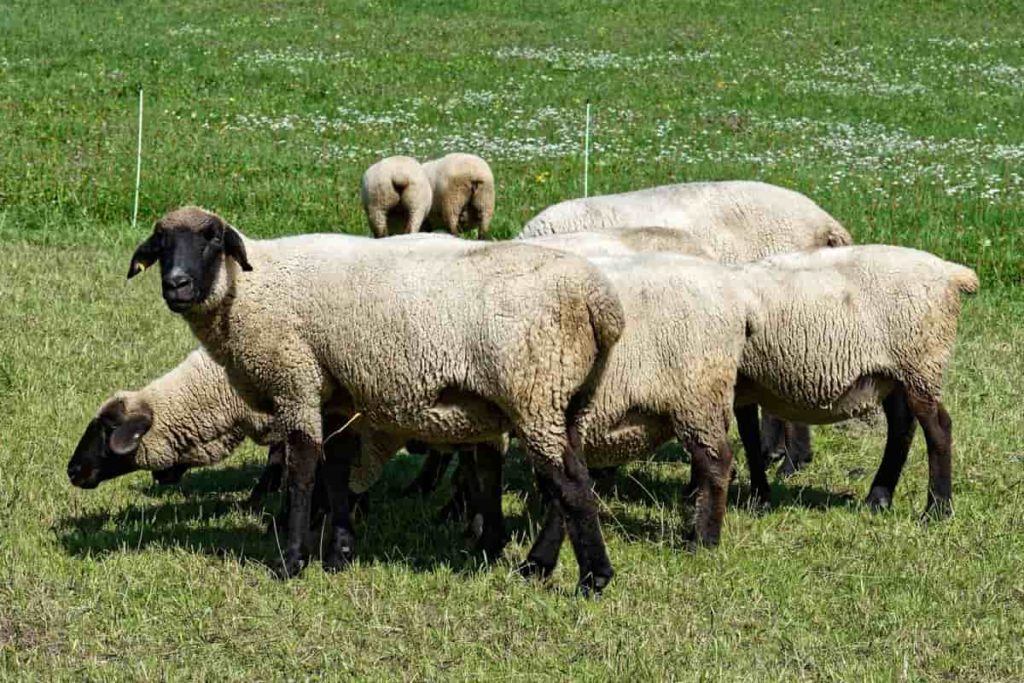
Mr. Eshwar uses a 5 hp blower model chaff cutter to cut the grass into small pieces, to feed the sheep. He installed a motor that runs on 3 phase current, to support this chaff cutter. It can cut the grass by 2 tonnes per hour, and cut an inch of grass into 3 pieces. He bought this chaff cutter for 50,000 rupees and says it makes feeding simple for him.
He first shreds Super Napier grass of a certain amount and then he shreds the other two types, making it simple for him to obtain the proper proportions. Early in the morning, the sheep are fed with grain which makes them hungry and drink more water. 50 to 100 grams of grain are fed to his sheep daily, according to their age and weight.
Rearing of Mr. Eshwar’s sheep
Mr. Eshwar is following a semi-intensive rearing system, which involves rearing sheep outside and in sheds simultaneously. He releases his sheep into farms and the outside environment daily at morning 11 am. The proper development and growth of the sheep are dependent on the time they spend outside the shed, he added. This type of daily rearing helps in creating a stress-free environment for sheep which is very beneficial for their health. This can also add quick muscle growth for sheep.
When sheep are released outside the workers clean the shed and also take care of other activities such as filling the water in water containers. Sheep again return to the shed at 4 pm, after this the feed is given to sheep. As mentioned above this feed is a mixture of Super Napier, Hedge Lucerne, and Stylo Scabra. It takes approximately 3 kg of feed per sheep daily, in this 2 kg consists of Super Napier and another kg is a mixture of Hedge Lucerne and Stylo Scabra.
Mr. Eshwar says it takes 1 male sheep for every 25 female sheep when it comes to breeding. One male sheep can impregnate 25 female sheep in a short time, which can help us in expanding our sheep farm. Mr. Eshwar says that he changes these male sheep every 2 years to overcome any genetic dysfunctions. This can also help in the fast expansion of the sheep farm. Selecting a male sheep is very important.
You have to choose a male sheep that is strong and healthy since the kids that come from these sheep develop the same characteristics. You should always choose a male sheep from another farm, this can help in active and healthy reproduction. Many sheep can give birth to two kids and some can only give birth to one. Triplets can also be expected but in rare cases.
In case you miss this: Dairy Farm Insurance in India, Companies, Policy, and Premium
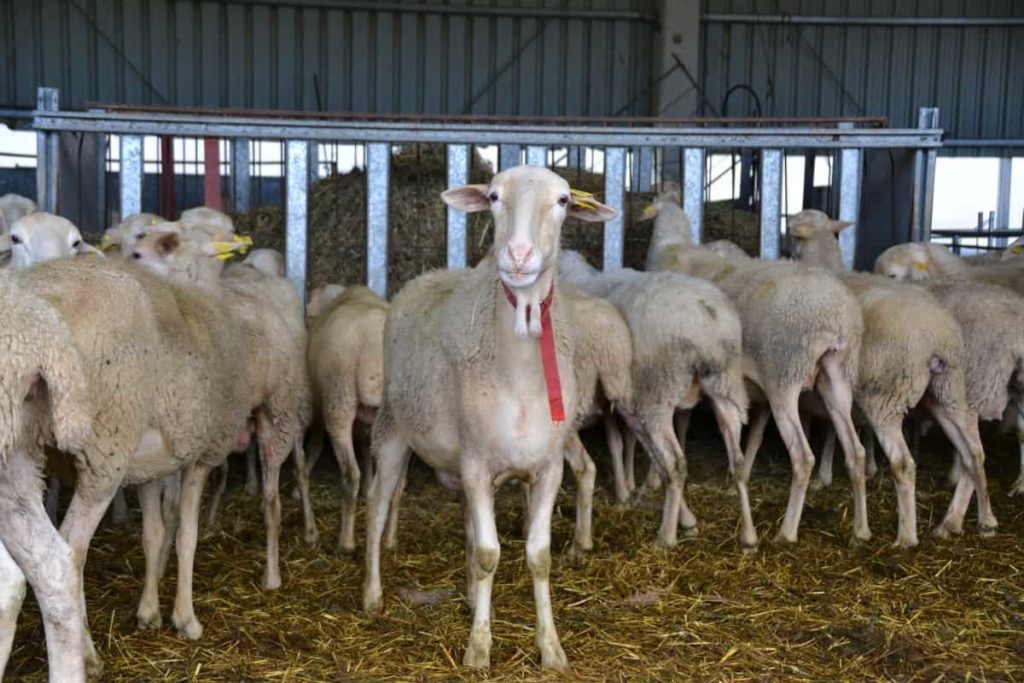
Sheep become mature when they attain 12 months of age. These can give reproduce three times in two years. The pregnant period for sheep is 5 months; soon after they give birth they can undergo another impregnation after a month.
Vaccinations for Mr. Eshwar’s sheep
Bluetongue disease, foot and mouth disease, PPR disease are some of the common diseases that can be seen in sheep. Mr. Eshwar says it is better to prevent these diseases by vaccinations since curing them costs more and also damages the health of the sheep. Vaccination for Blue Tongue disease should be done in august, for PPR in January and for E.T the vaccination should be done in May.
These vaccinations are compulsory, to prevent the sheep from diseases. Pregnant sheep are vaccinated with calcium vaccines since in many cases they lose a huge amount of calcium while giving birth. Diseased sheep are often left unsold. You should also consult a veterinarian for the proper medication of sheep if needed.
Marketing and profits of Mr. Eshwar’s sheep farm
Mr. Eshwar sells his male sheep kids at the age of three months, for 7,000 to 8,000 rupees. He also sells nearly 10 to 15 female sheep every year, when they start to get old. From the rearing of 150 sheep, he invests nearly rupees 1,00,000 and the income returns are rupees nearly 6,00,000 to 7,00,000 rupees.
In case you miss this: Goat Farming Business Plan, Goat Farm Design
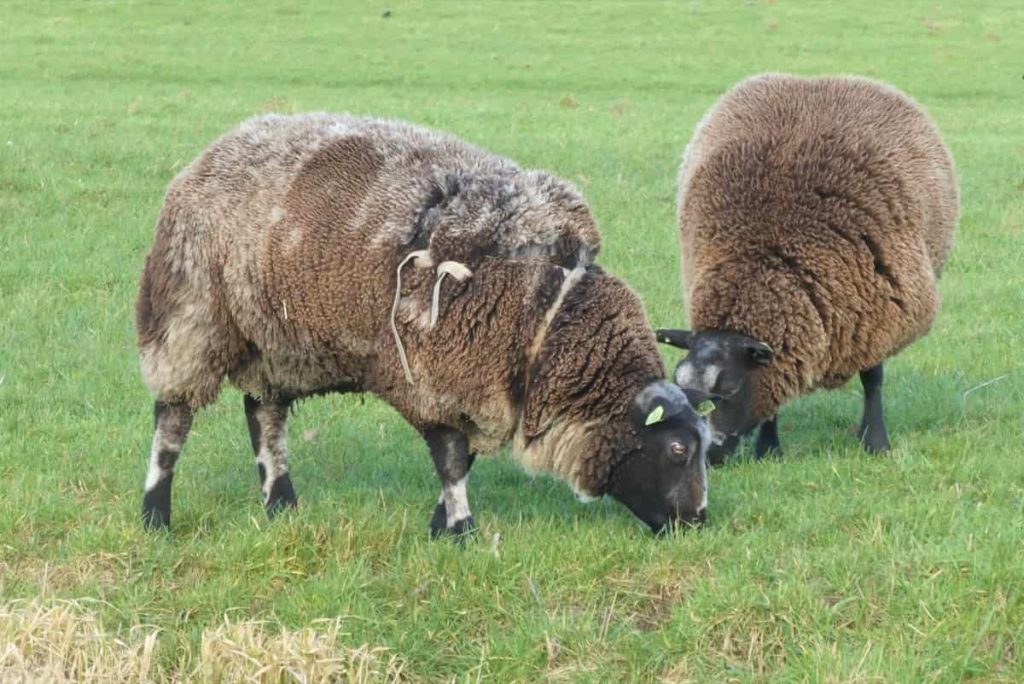
So he earns a profit of nearly 5,00,000 to 6,00,000 rupees per annum. Mr. Sai Eswar Rao is now a proud owner of his sheep farm and advises youth who are undergoing unemployment problems, to start such cattle rearing businesses since they have a high scope of profits.
- Economical Aquaculture: A Guide to Low-Budget Fish Farming
- 15 Common Planting Errors That Can Doom Your Fruit Trees
- How to Make Houseplants Bushy: Effective Tips and Ideas
- Innovative Strategies for Boosting Coconut Pollination and Yield
- Pollination Strategies for Maximum Pumpkin Yield
- The Complete Guide to Chicken Fattening: Strategies for Maximum Growth
- Natural Solutions for Tulip Problems: 100% Effective Remedies for Leaf and Bulb-Related Issues
- Revolutionizing Citrus Preservation: Towards a Healthier, Greener Future
- Natural Solutions for Peony Leaf and Flower Problems: 100% Effective Remedies
- Maximizing Profits with Avocado Contract Farming in India: A Comprehensive Guide
- Natural Solutions for Hydrangea Problems: 100% Effective Remedies for Leaf and Flowers
- The Ultimate Guide to Choosing the Perfect Foliage Friend: Bringing Life Indoors
- From Sunlight to Sustainability: 15 Ways to Use Solar Technology in Agriculture
- The Ultimate Guide to Dong Tao Chicken: Exploring from History to Raising
- The Eco-Friendly Makeover: How to Convert Your Unused Swimming Pool into a Fish Pond
- Mastering the Art of Delaware Chicken Farming: Essentials for Healthy Backyard Flocks
- 20 Best Homemade Fertilizers for Money Plant: DIY Recipes and Application Methods
- How to Craft a Comprehensive Free-Range Chicken Farming Business Plan
- Brighten Your Flock: Raising Easter Egger Chickens for Beauty and Bounty
- How to Optimize Your Poultry Egg Farm Business Plan with These Strategies
- Subsidy for Spirulina Cultivation: How Indian Government Schemes Encouraging Spirulina Farmers
- Ultimate Guide to Raising Dominique Chickens: Breeding, Feeding, Egg-Production, and Care
- Mastering the Art of Raising Jersey Giant Chickens: Care, Feeding, and More
- Ultimate Guide to Raising Legbar Chickens: Breeding, Farming Practices, Diet, Egg-Production
- How to Raise Welsummer Chickens: A Comprehensive Guide for Beginners
- How to Protect Indoor Plants in Winter: A Comprehensive Guide
- Ultimate Guide to Grow Bag Gardening: Tips, Tricks, and Planting Ideas for Urban Gardeners
- Guide to Lotus Cultivation: How to Propagate, Plant, Grow, Care, Cost, and Profit
- Agriculture Drone Subsidy Scheme: Government Kisan Subsidy, License, and How to Apply Online
- Ultimate Guide to Raising Araucana Chickens: Breed Profile, Farming Economics, Diet, and Care
- Bringing Hydroponics to Classroom: Importance, Benefits of Learning for School Students
- Ultimate Guide to Raising Polish Chickens: Breed Profile, Farming Economics, Diet, and Care
- Ultimate Guide to Raising Australorp Chickens: Profile, Farming Economics, Egg Production, Diet, and Care
- Silkie Chicken Farming: Raising Practices, Varieties, Egg Production, Diet, and Care
- Sussex Chicken Farming: Raising Practices, Varieties, Egg Production, Diet and Care
- Homemade Feed Formulations for Livestock: Discover Cost-effective Starter to Finisher Feed Recipes